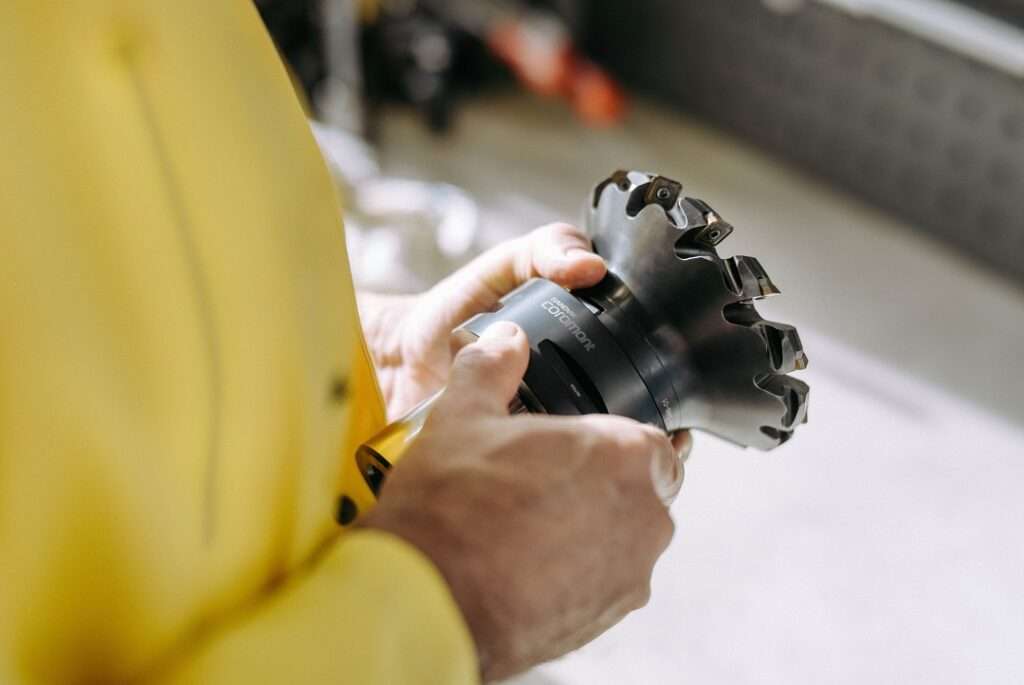The Indian Government is planning to boost domestic manufacturing and increase the manufacturing GDP in India, apart from inviting foreign companies to set shop in India, the PLI scheme also aims to encourage local companies to set up or expand existing manufacturing units.
What is the PLI Scheme?
Production Linked Incentive Scheme or the PLI Scheme was announced pursuant to the Atma Nirbhar Bharat campaign. The Government in Budget 2021 announced a commitment of INR 1.97 lakh crores (Euro 23 Billion) over five years (starting from FY 2021 – 22) for the PLI scheme to boost India’s manufacturing sector.
The purpose of the PLI scheme is to provide companies incentives on incremental sales from products manufactured in domestic units. It aims to invite foreign companies to set up operations in India and enhance India’s exports along with manufacturing capabilities.
The Government believes that this will not only enable integration with global supply chains but also establish backward linkages with the MSME sector in the country as it aims to create a robust manufacturing sector by providing benefits.
Quantum of Benefits
The quantum of benefits ranges from 3% – 7% on the incremental sales (over the base year i.e., 2019 – 2020) to the eligible companies for a period of 4 – 6 years as prescribed by the relevant ministries.
Eligible Sectors
The Companies need to be registered in India and to be involved in the manufacturing of goods covered under the below-provided target segments (table below) of the scheme can apply under the PLI Scheme. Eligibility under the Scheme shall be subject to thresholds of Incremental Investment (covered under Target Segments in the table below) and Incremental Production targets over the base year as defined.
The PLI Schemes are expected to enable the setting up of a wide supplier base for the global champions established under the scheme. It will help bring scale and size in key sectors and create and nurture global champions. All the units put together would help India to generate massive primary and secondary employment.
The Scheme extends to 13 sectors. The table represents the sectors, the corresponding implementing ministries and approved financial outlay over a five-year period. Priority Sectors Implementing Ministry/ Department Approved financial outlay over a five-year period. (in INR Crore/ Euro Millions)
How are incentives given out and who are the eligible entities?
As of now, there is no consolidated document presenting a uniform set of rules and regulations governing the manner in which incentives shall be given out to the eligible entities across sectors. But broadly, the following procedure is followed for the purpose of availing incentives under the PLI Scheme.
- The entity has to be a manufacturer registered in India. The application is to be made through the specific ministry website.
- The application is reviewed by authorities/committees designated in the relevant notifications and appointed by the relevant ministries.
- The final recommendations are placed before an Empowered Committee/ Group of Secretaries who finally approve the application.
- The incentives are disbursed on incremental sales for a period mentioned in the relevant notifications.
The applicant must meet the threshold criteria of incremental Investment and Production to be eligible for disbursement of incentive for the year under consideration. To meet the threshold criteria of such incremental investment, the cumulative value of investment done till such a year shall be considered. Based upon observation of the threshold of incremental sales of different ministries, the minimum investment may range from INR 10 crores (Euro 1.2 Million) to 500 crores (Euro 59 Million).
Designing a smart PLI Program
A steady transformation of the global production map is underway, triggered by the Covid pandemic. India with its massive domestic market and a mature industrial eco-system presents a very attractive option. And despite significant skill constraints, India still has one of the largest pool of workers in absolute numbers across all skill categories. In this context, the Production Linked Investment (PLI) scheme has the potential to be a transformational force multiplier, helping create champions that firmly embed India’s position in the global value-chains in the identified 13 sectors for such PLI.
But PLI is an industrial policy instrument that picks winners, and this has never been easy. In order to be successful, the PLI scheme has to be well designed to the needs of each of these 13 sectors. An important part of that would be to make sure that the sectoral programs are not designed to priorities the administrative comfort of the bureaucracy, an approach that has hobbled industrial policy in the past.
The expert opinion has highlighted the list of “must avoid” for PLI schemes. This includes not having overly complicated incentive reward criteria that allows too much discretion to officers in the disbursement of incentive, and long-term tariff protection from foreign competition. Any tariff protection to these sectors needs to have an explicit end date which is non-negotiable.
But there is a far greater need to focus on what the PLI needs to do to achieve genuine industrial transformation and provide long-term competitiveness to Indian manufacturing. PLI should lead to embedding India into the global value-chains in these industries through the transfer of skill and technology. This in turn means that the manufacturing activities that PLI promotes involves genuine value-addition, leads to the creation of a critical number of jobs that require skills beyond mere generic assembling of components, and leads to successful penetration of export markets.

If one goes by the PLI scheme adopted by MeITY for mobile phones and electronic components, none of these goals is explicitly being achieved. The criteria for the incentive are a threshold level of capital investment and achieving a certain level of sales. One can easily set up a basic assembly plant and import most of the parts and components to assemble a high-end phone or electronic component in that factory. Since the unit price of the final product would be relatively high, achieving the required level of sales revenue, especially if supported by tariff protection from foreign competition in a large domestic market like India, would not be difficult. Since workers would be undertaking simple assembling work, there would be minimal skill development and very little genuine transfer of technology or production process know-how.
Tariff protection increases the incentive for such a temporary location of assembly-type production in India. For e.g., a multinational mobile phone manufacturer could locate just the assembly of the final product in India to bypass the tariff on the final product but continue genuine production in another country.
 There are two sets of good news. First, nothing stops making our PLI schemes from having a smarter design that requires the manufacturer to meet objective criteria related to value-addition, skilled employment generation, and achieving international competitiveness over time. WTO’s Anti-Subsidies and Countervailing Measures Agreement does not prohibit government support to industry based on objective criteria related to value-addition, skill development or employment generation, including an indirect link to exports, i.e., exports acting as just one of the criteria for grant of incentive, that too as a proxy for international competitiveness.
There are two sets of good news. First, nothing stops making our PLI schemes from having a smarter design that requires the manufacturer to meet objective criteria related to value-addition, skilled employment generation, and achieving international competitiveness over time. WTO’s Anti-Subsidies and Countervailing Measures Agreement does not prohibit government support to industry based on objective criteria related to value-addition, skill development or employment generation, including an indirect link to exports, i.e., exports acting as just one of the criteria for grant of incentive, that too as a proxy for international competitiveness.
Second, given the digitalization of government databases related to value-added calculation of tax that maps invoiced price of final product vis-à-vis intermediates used (GST), customs and DGFT databases (export and import data), payments to labour (Employment Provident Fund Database or EPFO) among others, administering such an objective criterion-based incentive program will be much less cumbersome than subjective assessments of investment and other such criteria.
In fact, smart algorithms that use the data available in these databases would be adequate to assess whether a firm is deserving of incentive or not without the need for a single file having to be reviewed by officials in the Ministry.
Finally, a scheme focused on scale and quality of production outcomes, such as value-addition and employment generation would not end up rewarding investment in temporary facilities and jobs or revenue earned from the sale of a final product with very little value actually added in India. It would instead incentivize efforts that lead to improved competitiveness. Such efforts might not need huge capital infusion, but simply the appetite to take the risk of developing a new production line. Nothing stops an existing factory to re-orient itself to produce a new range of products that captures a niche for itself in the global market with minimal new investment.
PLI is Having the Right Effect through the Indian States
Much of the action for implementation of various projects will have to involve the Indian state governments so that the scheme benefits the states. State-level reforms may be needed to create better infrastructure and logistics, and to provide cheaper power: An ecosystem of nearby suppliers is also critical for many manufacturers, especially in hi-tech sectors like telecom. Companies seeking to manufacture sophisticated telecommunications equipment (e.g.,5G) will need to have reliable access to components. The production-linked incentive (PLI) scheme would lead to output worth $520 billion or Euro 442 billion in India in the next five years.
The Indian government has been working at every level to promote the industry through measures like the ease of doing business, reducing the compliance burden, creating multi-modal infrastructure to reduce logistics costs, and constructing district-level export hubs. The below are some of the highlights of the benefits to too few sectors.
Automobile
 The incentive planned under the PLI scheme starting in FY23 and ending FY27 is around Rs 57,042 crore (Euro 6711 million). The expectation is that PLIs would result in an additional investment of over Rs 1 trillion (Euro 12 billion) over a five-year period with the potential for creating 5.884 million jobs. The PLI scheme would incentivise research and development and the focus will be primarily on R&D for electric vehicles and battery capacity development.
The incentive planned under the PLI scheme starting in FY23 and ending FY27 is around Rs 57,042 crore (Euro 6711 million). The expectation is that PLIs would result in an additional investment of over Rs 1 trillion (Euro 12 billion) over a five-year period with the potential for creating 5.884 million jobs. The PLI scheme would incentivise research and development and the focus will be primarily on R&D for electric vehicles and battery capacity development.
Electronics
In addition to electronics, whose PLI was earmarked with an allocation of Rs 40,995 crore (Euro 4823 million) for five years, those in IT hardware and telecom equipment manufacturing will lead to an increase in production and domestic value addition to the Electronics sector.
Food Processing
The incentive planned under the PLI scheme starting in FY23 and ending FY27 is around Rs 10,900 crore (Euro 1282 million). The Indian Food Retail market is majorly dominated by Food Grocery (growing at CAGR 25%) and Food Services (growing at CAGR 15%) segments. India’s exports of Agri-food products were USD 32.7 billion (Euro 12 billion) in 2019-20. The FDI inflows from April 2014 to September 2021 amounted to USD 4.41 billion (Euro 3.75 billion). It is imperative to offset the disabilities vis-à-vis other countries and encourage global value chains (GVCs) and domestic industry players to set up manufacturing in India. We need to build policies to compete with countries and not companies.
The Flipside of PLI Scheme
Economic liberalisation after 1991 steadily cut import duties and other controls. This eventually created an export boom in the 2000s. But world exports stagnated after 2013 and so did India’s. Many countries sought solace in free trade areas (FTAs). So did India. But India’s exports to FTA partners stagnated whereas imports from them boomed.
In every listed sector, a minimum investment will be required over five years to qualify for a PLI of 4-6%. Why should the government pick winners instead of letting market competition decide that? In the 1990s, nobody thought that software, autos, and pharma would become India’s three top export sectors. Picking winners would have been an inferior strategy. Even in Asian neighbours, some attempts at picking winners were disasters (like Malaysia’s promotion of the Proton car). Industrial policy can hugely misallocate resources and spur crony capitalism. Will incentives and tariff protection really end after five years? Experience suggests that industries used to such support want them forever, pleading that any reduction will mean bankruptcies and unemployment. Many more sectors are demanding inclusion in the PLI list, which already looks too long. India has massive solar energy plans. That is the justification for including photovoltaic panels and batteries in the PLI list.
 An R&D culture is vital for success but cannot be induced by cash incentives. India has a multitude of small farms and does not allow corporate farming. So global scale food processing will require contract farming to assure quality supplies of produce. India has long been a textile exporter, based largely on its large cotton production, but no industrialist wants to set up giant factories with 20,000 workers as in Bangladesh or Cambodia because Labour laws are too onerous.
An R&D culture is vital for success but cannot be induced by cash incentives. India has a multitude of small farms and does not allow corporate farming. So global scale food processing will require contract farming to assure quality supplies of produce. India has long been a textile exporter, based largely on its large cotton production, but no industrialist wants to set up giant factories with 20,000 workers as in Bangladesh or Cambodia because Labour laws are too onerous.
The current commentary is that the PLI schemes will have a huge role to play in achieving size and scale in manufacturing, as these schemes incentivise incremental production and investment. This implies that the minimum production in the country as a result of the PLI schemes stands to be around $520 billion or Euro 442 billion in five years.
The PLI schemes must also be seen in conjunction with a host of other government initiatives taken recently. 29 Central Labour Laws have been rationalised into 4 Labour Codes. The MSME definition has been revised, raising investment limits upwards, enabling MSMEs to get bigger and more productive. The business environment is only getting easier, as we jumped 79 positions in the World Bank’s Ease of Doing Business Index. Infrastructure investments are continuing in earnest with the Rs. 1 lakh crore (Euro 12 billion) National Infrastructure Pipeline. India Corporate Tax rates are now on par with the best in the world. With these moves, India has positioned itself as a strong alternative to companies looking to diversify their supply chains. Combined with the potential of our large domestic market, India is poised to take its rightful place in global value chains.
For more details on PLI Scheme, you can write to me at info@vdmaindia.org or to S Manohar, Regional Head (South India), VDMA India at s.manohar@vdmaindia.org







